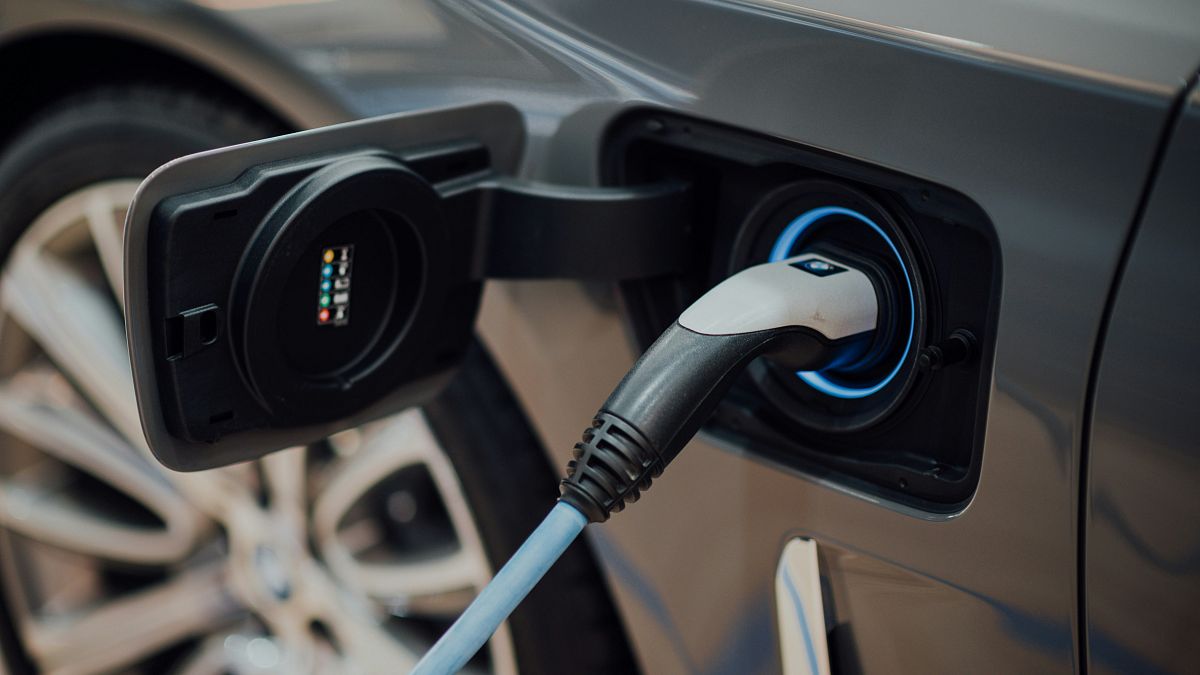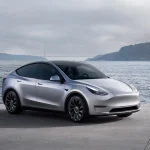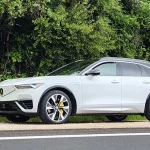The material will soon be manufactured in the EU and US, reducing dependence on Chinese supplies of graphite.
A company in New Zealand is turning discarded woodchips into synthetic graphite that can be used in EV batteries.
CarbonScape makes ‘biographite’ by heating byproducts from the forestry industry using a process called thermo-catalytic graphitisation.
This produces charcoal, which can be catalysed and purified into battery anode-quality graphite.
Skip Ad
Continue watchingafter the adVisit Advertiser websiteGO TO PAGE
PLAY  Latest
Latest
Video Settings
Full Screen
About ConnatixV477139 Read More
Read More Read More
Read More Read More
Read More Read More
Read More Read More
Read More Read More
Read More Read More
Read More Read More Could Croatia be the most sustainable traveldestination in Europe? Its tourism minister hopes so
Read More Could Croatia be the most sustainable traveldestination in Europe? Its tourism minister hopes so (new Image()).src = ‘https://capi.connatix.com/tr/si?token=604675c4-ea89-46c9-9817-5ed115e7bf41&cid=83b16131-8326-440c-9a78-470bcd2870e2’; cnxps.cmd.push(function () { cnxps({ playerId: “604675c4-ea89-46c9-9817-5ed115e7bf41” }).render(“29572e93412441b3b0dc992bd9167d8a”); });
(new Image()).src = ‘https://capi.connatix.com/tr/si?token=604675c4-ea89-46c9-9817-5ed115e7bf41&cid=83b16131-8326-440c-9a78-470bcd2870e2’; cnxps.cmd.push(function () { cnxps({ playerId: “604675c4-ea89-46c9-9817-5ed115e7bf41” }).render(“29572e93412441b3b0dc992bd9167d8a”); });
The startup says their alternative graphite is a more sustainable option and can help Europe reduce its dependence on China for lithium-ion batteries.
What is biographite and why is it important?
The graphite key to making EV batteries is currently sourced from mined natural graphite or synthetic graphite derived from petroleum products.
CarbonScape’s biographite is much more planet-friendly, according to CEO Ivan Williams.
“The production of ‘traditional’ synthetic graphite uses fossil fuel-based feedstocks, such as coal tar pitch and petroleum coke, and fossil fuel-powered processes,” he says.
“Consequently, it emits 35 tonnes of carbon dioxide equivalent emissions for each tonne of graphite it produces.”
Natural mined graphite can take a heavy toll on communities, animals, and the environment and the extraction and production processes required to deliver a single tonne of anode-grade graphite from this raw material leave a 15-tonne carbon footprint.
Biographite, instead, is created from forestry by-products, such as woodchips.
“Utilising these widely available, sustainable feedstocks to make our product captures carbon that would otherwise have been emitted when they rotted,” Williams says.
“This means our technology can remove the equivalent of 2.7 tonnes of carbon emissions for every tonne of biographite that it produces, meaning it is a climate-positive alternative to this critical material for lithium-ion batteries.”
Biographite production can also take place close to battery factories, which further reduces CO2 emissions by cutting transport distances.
“As we use a widely available feedstock, we can also site production plants nearby battery and cell, and EV manufacturers, further boosting supply chain security while delivering additional economic efficiencies and environmental benefits,” Williams says.
Can biographite help Europe reduce reliance on China for EV batteries?
CarbonScape hopes biographite can aid Western nations in reducing their dependence on China for LFP – lithium, iron, phosphate – batteries, which many electric vehicles run on.
In 2022, China produced around 5.5 million battery vehicles according to Statista – representing more than half of global EVs made that year.
Critics have warned that CarbonScape’s system requires too large a supply of woodchips and is not as cost-effective as graphite.
However, according to Williams, “using less than 5 per cent of the forestry industry by-products generated annually in Europe and North America, we could meet half the total global projected graphite demand for grid-scale and EV batteries with biographite by 2030.”
“We create biographite using sustainable feedstocks and renewable energy i.e. non-finite resources, it is uniquely attractive to off-takers, due to its relative long-term price security,” Williams adds.
“Incumbent technologies, by comparison, are dependent on finite resources – dwindling stocks of fossil fuels and a limited number of economically viable graphite mines, respectively – exposing their off-takers to price volatility, as well as the threat of supplies simply ‘drying up’.”
Last year, CarbonScape secured $18 million (€16.7 million) in funding from Finnish-Swedish forestry firm Stora Enso and Hong Kong-based battery producer Amperex Technology Ltd (ATL).
Williams says the investment will finance the construction of commercial biographite plants in Europe and the US – the material is currently produced in a pilot plant in New Zealand.
It comes at a critical moment when the booming EV market is seeing spikes in demand for graphite.
By 2030, the world will be facing a global supply deficit of 777,000 tonnes of graphite, according to projections from consultancy firm Project Blue.










